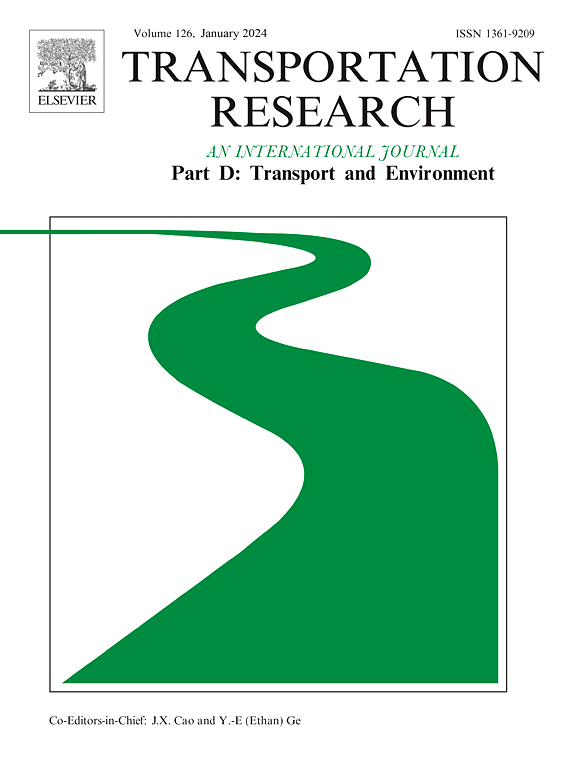自动驾驶汽车与城市停车模式:环境影响和市民偏好
IF 7.3
1区 工程技术
Q1 ENVIRONMENTAL STUDIES
Transportation Research Part D-transport and Environment
Pub Date : 2024-10-03
DOI:10.1016/j.trd.2024.104437
引用次数: 0
摘要
本研究探讨了未来自动驾驶汽车(AV)的停车决策,重点关注其对能源的影响。利用多叉 logit 模型,对西班牙桑坦德市的巡游、车库停车、将自动驾驶汽车送回家和路边停车之间的偏好进行了评估。送车回家因其便利性而成为最受欢迎的选择(52%),而车库停车因其安全性和环保性而受到 36% 的青睐。巡游停车最不受欢迎(6%),因为环境问题而望而却步。通过将调查数据与交通模拟相结合,研究发现,尽管巡游的受欢迎程度较低,但空载出行却占到了能源消耗的 16%。令人惊讶的是,尽管送自动驾驶汽车回家最受欢迎,但也导致了大量的能源消耗,尽管它保持了良好的能耗比。车库停车,尤其是位于城市郊区的车库停车,效率也不高。这项研究强调,迫切需要制定战略来减少低效的停车行为,从而提高以自动驾驶汽车为驱动的交通的可持续性。本文章由计算机程序翻译,如有差异,请以英文原文为准。
Automated vehicles and the urban parking paradigm: Environmental implications and Citizen preference
This study examines parking decisions in a future populated by automated vehicles (AVs), focusing on their energy implications. Using a multinomial logit model, preferences among cruising, garage parking, sending the AV home, and on-street parking in Santander, Spain, were evaluated. Home sending emerged as the favourite (52%) for its convenience, while garage parking was chosen by 36%, valued for security and environmental benefits. Cruising was least popular (6%), deterred by environmental concerns. Integrating survey data with traffic simulations, the research uncovered that cruising, despite its low preference, accounted for 16% of energy consumption due to empty trips. Surprisingly, sending AVs home, despite being the most popular, led to significant energy use, although it maintained a good consumption ratio. Garage parking, especially when located on city outskirts, was also inefficient. The study highlights the urgent need for strategies to mitigate inefficient parking behaviours, thereby enhancing the sustainability of AV-driven mobility.
求助全文
通过发布文献求助,成功后即可免费获取论文全文。
去求助
来源期刊
CiteScore
14.40
自引率
9.20%
发文量
314
审稿时长
39 days
期刊介绍:
Transportation Research Part D: Transport and Environment focuses on original research exploring the environmental impacts of transportation, policy responses to these impacts, and their implications for transportation system design, planning, and management. The journal comprehensively covers the interaction between transportation and the environment, ranging from local effects on specific geographical areas to global implications such as natural resource depletion and atmospheric pollution.
We welcome research papers across all transportation modes, including maritime, air, and land transportation, assessing their environmental impacts broadly. Papers addressing both mobile aspects and transportation infrastructure are considered. The journal prioritizes empirical findings and policy responses of regulatory, planning, technical, or fiscal nature. Articles are policy-driven, accessible, and applicable to readers from diverse disciplines, emphasizing relevance and practicality. We encourage interdisciplinary submissions and welcome contributions from economically developing and advanced countries alike, reflecting our international orientation.

 求助内容:
求助内容: 应助结果提醒方式:
应助结果提醒方式:


